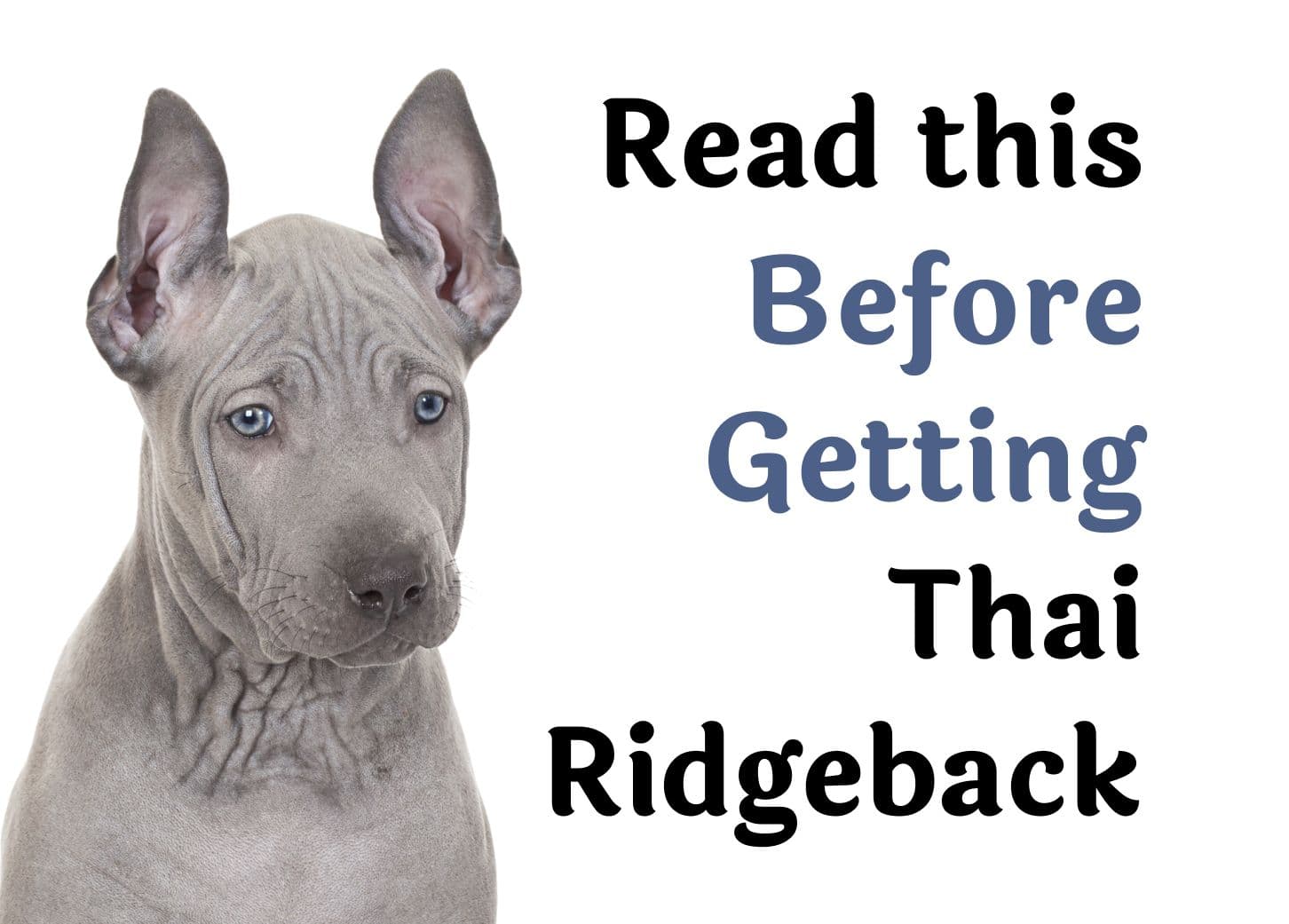Essential Tips for Owning a Thai Ridgeback

If you've never heard of the Thai Ridgeback, you're not alone — they’re rare outside of Thailand. But if you're the right kind of dog owner, this breed might just steal your heart.
We first came across the Thai Ridgeback while researching breeds similar to the Rhodesian Ridgeback, and wow — what a powerhouse of a dog. These are not beginner-level pups, but for experienced owners who love a challenge and want a loyal, athletic companion, they’re incredible.
What Makes the Thai Ridgeback Unique?
The Thai Ridgeback is an ancient breed — thousands of years old — originally used in Thailand for hunting, guarding, and even pulling carts. Poor transport links in rural Thailand helped keep the breed pure, so what you see today is pretty close to the original dog.
Physically, they’re strong, agile, and sleek. Medium-sized but muscular, with a short coat that comes in solid black, red, fawn, or a beautiful silvery blue. As their name suggests, they have a distinctive ridge of hair running down their back that grows in the opposite direction — one of only three breeds in the world with this feature.
Personality: Not for the Faint of Heart
Thai Ridgebacks are smart, confident, and fiercely independent. They don’t live to please — they think for themselves. That makes them interesting, but also tricky. They bond deeply with their family and are naturally protective, which means early and consistent socialization is a must.
They’re not ideal for first-time dog owners. These dogs need someone who understands dog behavior and can confidently set boundaries. If you’re not consistent, they’ll absolutely take advantage — not in a mean way, just because they can.
That said, with the right training, they’re affectionate, fun-loving, and loyal watchdogs who are great with older kids.
The Energy is Real
This is not a couch potato breed. Thai Ridgebacks are built to move — they love to run, jump, climb, and explore. A quick walk around the block won’t cut it. You’ll need to commit to long walks, runs, or agility training to keep them from getting bored (and destructive).
Also important: secure fencing. These dogs are escape artists. They jump, dig, and climb, so your yard needs to be Fort Knox.
Training Tips from Real Life
Thai Ridgebacks are whip-smart, but they get bored fast. Keep training sessions short, fun, and varied. Repetition will make them check out. Use positive reinforcement — harsh methods will only cause pushback.
Start with the basics early: sit, stay, come, heel, leave it. But also focus on socialization — they need to get used to different environments, people, and other dogs early on or they can become wary and overly protective.
And here’s a big one: never train them for guarding or protection work. They're naturally protective, and encouraging that can tip the balance in the wrong direction.
Living with a Thai Ridgeback
They’re surprisingly low-maintenance when it comes to grooming — a quick brush now and then is enough. And they don’t shed much!
But they do need a lot of your time. They don’t like being left alone all day and they’ll let you know if they’re bored or frustrated. The good news? They don’t bark unnecessarily and are pretty adaptable to both city and rural life — as long as they get their exercise.
Because of their high prey drive, they may not be safe around small animals or livestock, especially off-leash. Inside the home, they can get along with cats and dogs they grow up with, but introductions should be slow and supervised.
Health Overview
Generally healthy, Thai Ridgebacks live around 12–15 years. But like all breeds, they have some potential issues:
- Hip dysplasia – Common in active breeds
- Dermoid sinus – A congenital issue near the spine, often requiring surgery
- Bloat (GDV) – A serious, sometimes fatal stomach condition
They can also be prone to allergies, so keep an eye out for itching or digestive issues and work with your vet to manage them.
Puppy & Senior Care
Puppies need lots of sleep, positive socialization, and structure. Set up a safe space with baby gates, a crate, and chew-safe toys. Be patient — these pups can be strong-willed, but early training pays off big time.
As they age, expect some slowing down. Older Thai Ridgebacks may develop arthritis or become pickier eaters. Regular vet checkups and a comfy bed will help them stay happy and healthy.
Choosing a Breeder
This breed is rare, so expect a wait — but please don’t rush the process. Avoid online ads or anyone pressuring you to send money without meeting the pups and the parents. A good breeder will let you visit, ask you a lot of questions, and be transparent about health testing.
You want a breeder who’s in it for the love of the breed, not just to make a quick buck.
Quick Facts
- Thai Ridgebacks are one of only three breeds with a ridge — the others being the Rhodesian and Phu Quoc Ridgebacks.
- They’re strong escape artists — think Houdini with four legs.
- Not cold-weather fans — their short coat doesn’t offer much insulation.
- Low grooming needs but high exercise and training needs.
- Not for first-time dog owners — they need structure and experience.
Bottom line? Thai Ridgebacks are stunning, intelligent, and loyal — but they’re not for everyone. If you’re an experienced dog owner with time, energy, and a love for a challenge, this breed might be your perfect fit.
Just be prepared to earn their respect — and their heart.
Take the Quiz
Is a Thai Ridgeback Right for You?
The Thai Ridgeback is a rare and independent breed known for its unique ridge of hair along its back. Discover if this loyal and protective companion is the perfect fit for your lifestyle by taking our quiz! Answer all questions below to discover your compatibility score and get personalized insights.
Question #1: What is the main reason you want a dog?
Question #2: How active is your lifestyle?
Question #3: How much time can you dedicate to your dog daily?
Question #4: What best describes your home environment?
Question #5: What size dog do you prefer?
Question #6: What personality traits do you want in your dog?
Question #7: How much grooming can you handle?
Question #8: Who else lives with the dog?
Question #9: Is this your first dog?
Please answer all 9 questions to see your results
